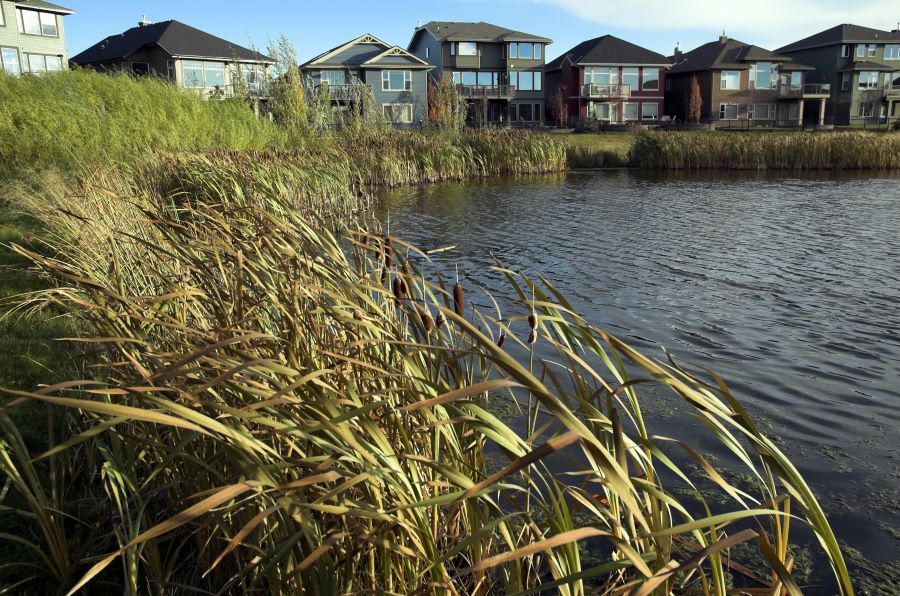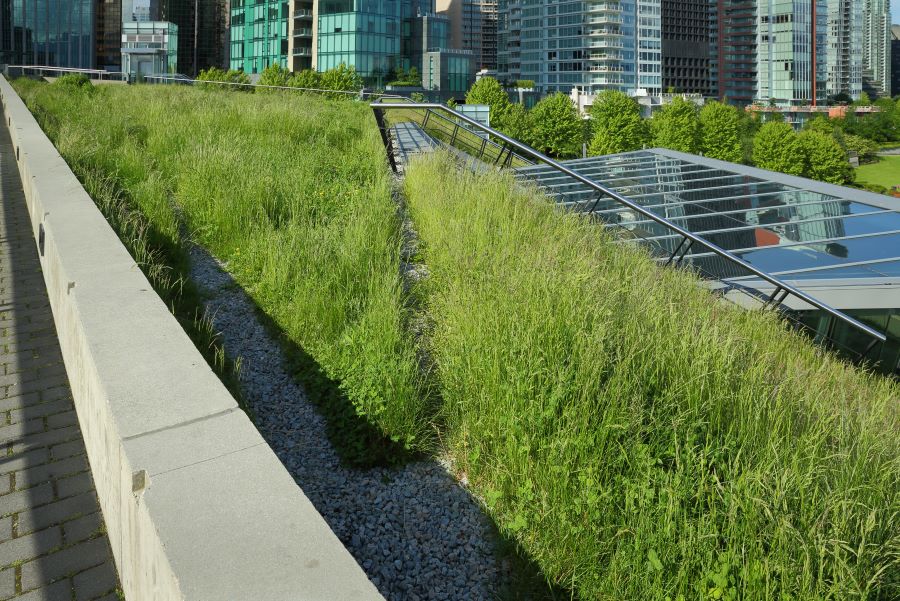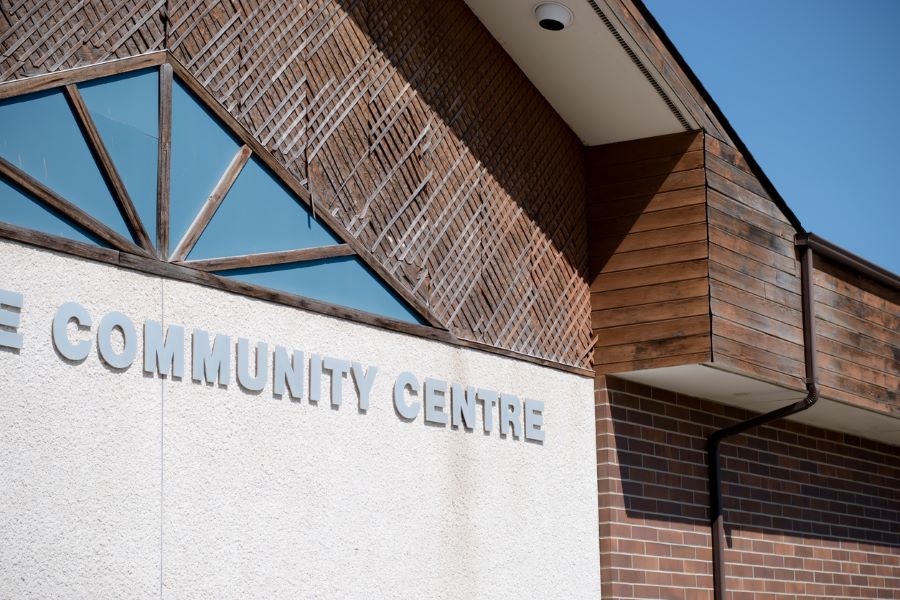
Communities can reduce their climate vulnerabilities and risks by implementing effective climate adaptation projects that put plans into action. Municipalities play a critical role in this process and are uniquely positioned to address local needs and support vulnerable populations.
Adaptation projects are most effective when they address priorities identified through a community-wide risk assessment or climate adaptation plan, and when they centre equity and are driven by an inclusive engagement process.
Use this web-based tool to identify actions to take to help address climate risks in your community. This tool complements GMF’s Adaptation in Action implementation project funding, as elements of many of the projects listed here are eligible to be funded.
Projects are organized thematically so that you can explore options that align with your area of focus and current priorities. Within each section, projects are described briefly and climate hazards that each project addresses are highlighted.
- Park and public space management

Tree planting and greening
Greening initiatives such as planting and maintaining native trees and shrubs help reduce urban heat and manage stormwater while also enhancing local biodiversity and resident well-being.
Strategies: Increasing tree planting efforts as well as developing, enhancing and maintaining green spaces can significantly improve resilience to both heat and flood risks.
Co-benefits: Including pollinator-friendly species enhances biodiversity and ecosystem health. Additionally, green spaces contribute to the beauty of public spaces, fostering connectivity through added or improved social gathering spaces.
Strengthening the impact: Prioritize neighbourhoods where there may be fewer households with access to air conditioning and areas with fewer green spaces or a higher proportion of paved surfaces contributing to heat island effects.
Climate hazards addressed:
- Extreme heat
- Flooding
Shade structures
Shade structures reduce heat exposure and encourage community use of outdoor areas year-round.
Strategies: Shade structures in parks and public spaces provide relief from the sun, reducing the risk of heat-related illness.
Co-benefits: These structures can also be designed to make outdoor spaces more welcoming and comfortable year-round by offering protection from rain and other elements, thus encouraging social gatherings and community connectivity.
Strengthening the impact: Prioritize shade structures in accessible areas with limited existing shade and green space and, in particular, where vulnerable populations have limited access to cooling.
Climate hazards addressed:
Extreme heat
Increased precipitation
Outdoor cooling facilities
Outdoor facilities with access to drinking water as well as water-based recreational opportunities offer vital hydration and cooling opportunities in public spaces.
Strategies: Outdoor cooling facilities can range from water bottle filling stations to misting stations and splash pads.
Co-benefits: These facilities give residents relief from summer heat while offering social gathering spaces and outdoor recreation opportunities.
Strengthening the impact: Prioritize accessibility and focus on neighbourhoods with limited access to other cooling facilities or shaded areas, reducing disparities across the community.
Climate hazard addressed:
- Extreme heat
Tick habitat reduction
Rising temperatures and longer warm seasons are leading to more-abundant tick populations as well as increased tick activity levels and geographic range. By managing park landscapes to reduce tick habitats, municipalities can help mitigate the risk of tick-borne diseases.
Strategies: Redesign landscapes to create clear pathways and trails, move seating into open areas and increase trail maintenance.
Strengthening the impact: Prioritize park spaces with wooded areas, tall grass or shrubs that are near spaces frequently used by people.
Climate hazard addressed:
- Rising annual temperatures
- Ecosystem management

Wildfire prevention
Vegetation-based wildfire risk mitigation strategies help protect communities and natural areas from the spread of wildfires.
Strategies: Create buffer zones or fire breaks, reduce fuel loads and manage vegetation to slow the advance of wildfires.
Strengthening the impact: Prioritize high-risk areas near vulnerable communities and critical infrastructure. Where possible, integrate local Indigenous knowledge into wildfire management planning and practices.
Climate hazard addressed:
- Wildfires
Shoreline management
Effective management of shorelines, including riparian buffers, is essential to protect communities and infrastructure from flooding and rising sea levels.
Strategies: Shoreline management can include natural infrastructure improvements such as riparian buffer rehabilitation, beach nourishment and bank stabilization as well as adding or upgrading built infrastructure such as retaining walls.
Co-benefits: Shoreline rehabilitation helps control erosion, provides habitat for wildlife and enhances water quality while also having the potential to mitigate drought risks through improved groundwater recharge. Where rehabilitation efforts lead to increased green spaces, initiatives can help cool surrounding areas.
Strengthening the impact: Prioritize projects in areas with critical infrastructure and distribute implementation based on both risk and need across vulnerable neighbourhoods, ensuring that modifications will not transfer risks elsewhere.
Climate hazards addressed:
- Flooding
- Sea-level rise
- Severe storms
- Drought
Aquifer recharge area rehabilitation
Rehabilitating aquifer recharge areas is vital for maintaining groundwater supplies, especially in regions facing water scarcity.
Strategies: Rehabilitation efforts focus on restoring natural landscapes to enhance their ability to absorb and filter water, supporting the replenishment of underground water stores during rainfall events.
Strengthening the impact: Prioritize recharge areas that support water supplies for communities with limited access to alternative water sources, ensuring equitable access to clean and reliable source water.
Climate hazards addressed:
- Flooding
- Drought
Slope stabilization
Slope stabilization, particularly in fire-impacted areas, is crucial to prevent landslides and soil erosion, which can pose significant risks to nearby communities and infrastructure.
Strategies: This could involve planting deep-rooted vegetation, installing retaining structures or reshaping slopes to reduce their steepness.
Co-benefits: These efforts can also enhance flood protection by reducing surface runoff and improving water absorption during heavy rains. Additionally, using deep-rooted vegetation to stabilize slopes improves soil health and water retention, potentially increasing drought resilience and supporting local biodiversity.
Strengthening the impact: Prioritize areas where landslide risks threaten communities or critical infrastructure, while planning long-term safety and stability.
Climate hazards addressed:
- Wildfires
Flooding
Drought
- Water management

Drinking water system upgrades
Upgrading drinking water systems may be necessary in regions where municipal drinking water wells or intakes are anticipated to experience significant changes or variability in source water quality resulting from climate events like flooding, drought, wildfires or algal blooms driven by rising temperatures.
Strategies: These upgrades might include improved flood protection for wellheads or treatment system improvements to manage changing or fluctuating source water quality.
Strengthening the impact: Prioritize systems and wells at direct risk of flooding while also identifying and addressing potential risks from wildfires, drought and rising temperatures.
Climate hazards addressed:
- Flooding
- Drought
Wildfires
Rising annual temperatures
Green stormwater infrastructure
Green stormwater infrastructure manages heavy rainfall by capturing, filtering and slowly releasing it, reducing the burden on grey infrastructure and reducing flood risks.
Strategies: Green infrastructure solutions include bioswales, storm ponds, rain gardens, sponge parks and other low impact development strategies. Where appropriate, initiatives can include vegetation that withstands both wet and dry conditions.
Co-benefits: These solutions also contribute to groundwater recharge and can potentially improve water quality while the vegetation within these projects can potentially help reduce urban heat and increase access to natural environments.
Strengthening the impact: Prioritize integrating these systems in urban areas prone to flooding and in communities with an abundance of paved or impervious surfaces.
Climate hazards addressed:
Extreme heat
Drought
Flooding
Structural flood protection and stormwater collection
Flood protection and collection systems help manage and mitigate the impacts of heavy rainfall and flooding. These projects could also include modernizing aging infrastructure or removing outdated structures to restore natural waterways.
Strategies: Measures might include building or upgrading pump stations, flood conveyance systems, flood walls, debris catchment structures, jetties or detention ponds. Projects can also include retrofitting, upgrading or decommissioning dams, dikes and channels to improve water flow, reduce flood risks and enhance ecosystem health.
Strengthening the impact: Prioritize protecting communities with reduced adaptive capacity, such as in places with limited resources to recover from a flood. Take care to ensure the resulting changes to river hydrology do not increase flood risk in downstream communities.
Climate hazard addressed:
- Flooding
Floodplain restoration
Restoring floodplains to their natural state enhances their ability to absorb floodwaters and improves wildlife habitat.
Strategies: Restoration efforts can involve reconnecting rivers to their floodplains, removing barriers and restoring native vegetation.
Co-benefits: Restoration projects can help mitigate drought by facilitating groundwater recharge, thereby increasing source water supplies, and in some cases can reduce summer heat impacts through increased vegetation.
Strengthening the impact: Prioritize projects that can provide the greatest flood protection benefits to communities and where natural habitats are most in need of restoration.
Climate hazards addressed:
- Flooding
- Extreme heat
- Drought
Wetland restoration or construction
Restoring or constructing wetlands enhances water retention, improves water quality and provides critical habitat for a variety of wildlife.
Strategies: Restoration or construction efforts might include reconnecting streams, using water level controls, incorporating native plantings in vegetated buffer zones and other natural stormwater management practices.
Co-benefits: Wetlands absorb excess water during heavy rains, replenishing groundwater supplies that can then mitigate periods of drought. In some cases, the increased vegetation cover provided by wetlands can help moderate nearby temperatures, reducing summer heat impacts.
Strengthening the impact: Prioritize projects that provide flood protection and water quality improvements to nearby at-risk communities, particularly those with less capacity to recover from floods. Identify opportunities to build local Indigenous knowledge into project planning.
Climate hazards addressed:
- Flooding
- Drought
- Extreme heat
Water efficiency upgrades
Water efficiency upgrades help mitigate water scarcity and drought risks while promoting sustainable water use.
Strategies: Upgrades can range from low-flow fixtures in municipal facilities to advanced irrigation systems and leak detection technologies.
Co-benefits: These upgrades help conserve water, reduce demand on local water supplies and lower costs.
Strengthening the impact: Prioritize older buildings and, when applicable, publicly owned community housing, as well as places with high water use or demand.
Climate hazard addressed:
- Drought
- Road and transportation management

Street trees
Increasing tree canopy cover along streets provides shade and reduces urban heat island effects.
Strategies: Planting and maintenance strategies include selecting appropriate species and locations, ensuring proper planting techniques and providing adequate care such as deep watering, mulching and pruning.
Co-benefits: The shade and improved streetscaping provided by street trees can promote active transportation like walking and biking. Additionally, street trees improve air quality, help reduce flood risks and may prolong the life of the street surface.
Strengthening the impact: Prioritize street tree planting in areas with low canopy cover and limited green spaces to work towards equitable access to both natural cooling and improved streetscapes. Inclusive community engagement can be helpful in the planning, implementation and stewardship of this natural asset.
Climate hazard addressed:
- Extreme heat
Cool pavements
Cool pavements can lower ground-level temperatures, reducing the urban heat island effect and mitigating the risk of heat-related illness during heat waves.
Strategies: Where hard surfaces are essential or needed, find opportunities to use reflective colours and materials instead of traditional options such as black asphalt.
Strengthening the impact: Prioritize cool pavements in areas where hard, impermeable surfaces are more prevalent, canopy cover is low and access to cooling options is limited.
Climate hazard addressed:
- Extreme heat
Permeable pavements
Permeable pavements allow water to pass through, reducing surface runoff and the risk of flooding during heavy rain events.
Strategies: Permeable pavement options include interlocking pavers, porous asphalt and pervious concrete that can be used for parking lots, driveways, sidewalks and low-traffic roads.
Co-benefits: These pavements can improve groundwater recharge in urban areas and some permeable pavement options incorporate grass cover, helping to lower surrounding temperatures.
Strengthening the impact: Prioritize at-risk areas with critical infrastructure or residential areas at higher risk: for example, areas with older housing stock that might be less floodproof, or low-income neighbourhoods where residents might have less capacity to recover after a flood.
Climate hazards addressed:
- Extreme heat
- Flooding
Resilient infrastructure upgrades
Upgrading critical infrastructure to withstand severe storms, floods, extreme heat and other climate-related hazards is essential for maintaining community resilience. This includes bridges, roads and public transit infrastructure.
Strategies: These upgrades can range widely and include reinforcing structures, improving materials used, increasing conveyance or storage capacity, incorporating flood-proofing design, enhancing transit-system heating and cooling and integrating smart or sensing technologies.
Strengthening the impact: Identify potential challenges, local considerations and opportunities to integrate co-benefits through inclusive community engagement.
Climate hazard addressed:
- Multiple
- Building management

Passive cooling
Implementing passive cooling in buildings can reduce indoor temperatures, a critical factor in preventing heat-related illness during periods of high or extended summer heat.
Strategies: Passive cooling strategies include increasing insulation, adding reflective surfaces and selecting building materials that minimize heat absorption, as well as incorporating design features such as cool roofs, green walls and optimized window location and design.
Co-benefits: These measures not only reduce energy consumption and costs, but also improve living conditions.
Strengthening the impact: Prioritize passive cooling retrofits in community housing buildings that lack air conditioning, particularly high-rise apartments, and in buildings that house facilities caring for those at a higher risk of heat-related illness such as retirement and long-term care facilities and childcare centres.
Climate hazard addressed:
- Extreme heat
Blue roofs
Blue roofs can help manage stormwater in dense urban areas, preventing water from overwhelming drainage systems during heavy rains and reducing the risk of flooding.
Strategies: Blue roofs provide temporary storage so that heavy rainfall can be released slowly.
Co-benefits: Blue roofs can provide similar benefits to cool roofs, reducing heat island impacts and supporting passive cooling. Blue roofs can sometimes be combined with rainwater harvesting or greywater systems, potentially reducing pressures on municipal water supplies.
Strengthening the impact: Prioritize compatible buildings in areas where overland (also known as urban) flood risks are high.
Climate hazards addressed:
- Flooding
- Extreme heat
Flood-proofing buildings
Building new and retrofitting existing buildings to better manage flooding is critical to reduce damage and ensure occupant safety in flood-prone areas.
Strategies: Approaches include landscaping to redirect or better absorb runoff, elevating electrical systems and equipment, installing flood barriers or sump pumps and using water-resistant building materials.
Strengthening the impact: Prioritize flood-proofing in buildings that provide critical services and in community housing facilities where residents might have fewer resources to recover from flood damage.
Climate hazard addressed:
- Flooding
Structural storm upgrades to buildings
Making buildings more able to withstand severe storms, high winds and tornadoes is critical as severe storms become more frequent and intense.
Strategies: Install hurricane clips or straps, reinforce windows and doors and choose roof materials resistant to storms and high winds.
Strengthening the impact: Prioritize these retrofits in older buildings, in community housing and in facilities providing essential services.
Climate hazard addressed:
- Severe storms
FireSmart property upgrades
As wildfire seasons become longer and more intense, it is increasingly essential to protect buildings and critical infrastructure from wildfires using best practices such as FireSmart strategies.
Strategies: Options include retrofitting structures with fire-resistant materials such as metal roofs or siding and removing or moving combustible materials as well as implementing other FireSmart measures such as creating a fire-resistant area, clearing brush and thinning, pruning or removing trees.
Strengthening the impact: Prioritize strategies in communities most at risk from wildfires, especially where residents might have limited means to rebuild or relocate.
Climate hazard addressed:
- Wildfires
HVAC system upgrades
HVAC systems in critical facilities— including in designated cooling, warming and clean air centres—play an essential role in mitigating the impacts of heat waves, cold periods and wildfire smoke events.
Strategies: Approaches to ensure reliable operations and optimize performance include modifying, maintaining, upgrading or replacing HVAC systems and adding backup power systems.
Co-benefits: Upgrades often improve performance, reducing both energy use and costs.
Strengthening the impact: Prioritize upgrades in facilities located in vulnerable neighbourhoods, which might include those with less green space or with a higher density of apartment buildings that lack air conditioning.
Climate hazards addressed:
- Extreme heat
- Wildfires
Relocating critical facilities
Moving critical infrastructure away from areas that are flood prone or exposed to sea-level rise is essential to reduce the risk of service disruptions during extreme weather events.
Strategies: Relocate essential infrastructure and facilities such as hospitals, emergency services and transportation hubs to help ensure continuity of operations and service delivery during and after climate events.
Co-benefits: Relocating infrastructure offers opportunities to redesign while considering overall climate resilience and other current and future community needs.
Strengthening the impact: Prioritize critical infrastructure in flood-prone areas where alternative service options are limited or unavailable, and in communities where transportation barriers would make it challenging to seek alternative services should primary services be disrupted.
Climate hazards addressed:
- Flooding
- Sea-level rise
- Energy and communication management

Backup power systems for critical infrastructure
Critical infrastructure and facilities must have reliable backup power in order to maintain safety and continuity during emergencies.
Strategies: Add backup power systems in essential facilities and to critical infrastructure such as pump stations and traffic signals to ensure that they remain operational during power outages.
Strengthening the impact: Prioritizing cooling and warming centres and clean air shelters, to enhance resilience against severe storms and help prepare communities for concurrent emergencies such as a power outage during a heat wave or a wildfire smoke event.
Climate hazards addressed:
- Severe storms
Extreme heat
Wildfires
Flooding
Hardening energy and communication infrastructure
Hardening utility infrastructure can significantly reduce the risk of interruptions to critical services during severe storms or wildfires.
Strategies: Bury power and communication lines and make infrastructure more wind and flood resistant.
Strengthening the impact: Prioritize high-risk areas such as places where trees might damage infrastructure during high wind events, while examining larger systems to ensure essential services can remain operational during emergencies.
Climate hazards addressed:
- Severe storms
- Wildfires
Microgrids
Creating local energy networks that can operate independently of the main grid enhances energy resilience during power outages resulting from severe storms or wildfires.
Strategies: Microgrids are small-scale electrical networks providing electricity to a designated area powered by a local energy source, in some cases solar or wind. They can be connected to the larger grid but can also keep electricity flowing in the case of a power outage.
Strengthening the impact: Design microgrids so that they can keep critical services and infrastructure operable during prolonged power disruptions.
Climate hazards addressed:
- Wildfires
- Severe storms
- Community services and networks

Cooling/warming centres and clear air shelters
Designating and staffing public facilities to offer accessible cooling, warming and clean air to residents during heat waves, cold periods and wildfire smoke events provides relief and reduces risks for vulnerable populations.
Strategies: Ensuring accessibility through approaches such as offering dedicated transit to cooling, warming and clean air centres or using air-conditioned buses as mobile cooling centres. In some cases, such as in apartment-style community housing, designated cooling rooms may provide better service to vulnerable individuals.
Strengthening the impact: Prioritize communities with fewer alternatives or where there are individuals at greater risk of heat-related illness. This might include neighbourhoods where air conditioning is less prevalent, or where there is a higher proportion of apartment buildings housing older, lower-income residents. Engage community members to create spaces that are welcoming, accessible and inclusive to encourage their uptake and use.
Climate hazards addressed:
- Extreme heat
Extreme cold
Wildfire smoke
Neighbourhood-based social support networks and climate resilience hubs
Neighbourhood networks and resilience hubs can provide essential resources and information channels during climate events, helping communities respond more effectively.
Strategies: Building effective neighbourhood networks takes time and dedication. Where possible, build on existing communities or social networks and consider piloting initiatives where local champions exist. Resilience hubs can offer shelter, supplies, workshops and training, acting as a focal point for resilience efforts.
Co-benefits: Neighbourhood-based social support networks strengthen community ties and enhance collective resilience to climate impacts.
Strengthening the impact: Prioritize neighbourhoods with a higher proportion of older adults living alone or with reduced mobility, or where local adaptive capacity and resources are limited.
Climate hazards addressed:
- Multiple
Building resilient affordable housing
Building resilient, affordable and supportive housing is crucial to protect low-income communities from the impacts of climate change.
Strategies: Approaches include building or retrofitting housing to withstand extreme weather, thereby reducing energy costs and providing safe living conditions during extreme weather such as heat waves, storms and flooding.
Co-benefits: Building climate-resilient affordable housing can boost financial stability for residents by reducing maintenance costs and lowering energy bills while also improving housing conditions and housing stability, which can in turn enhance health outcomes.
Strengthening the impact: Prioritize projects that incorporate climate resilience features, focusing on climate hazards relevant to the local community, to promote long-term housing stability and safety.
Climate hazards addressed:
- Multiple
Education campaigns and strategies
Municipal-led education campaigns and strategies play an important role in raising awareness about climate risks, promoting individual and group actions that reduce risks and enhance community resilience.
Strategies: Tailor campaigns to address local needs or amplify messages from reputable sources. For example, municipalities can share tips on staying safe during heat waves or promote incentive programs for resilient home retrofits such as flood proofing.
Strengthening the impact: Prioritize educational materials and outreach efforts that target those most at risk. Engaging with vulnerable populations to develop customized campaigns and messaging can help ensure that these communities receive the support and information they need while building the community’s collective capacity to respond to climate challenges.
Climate hazards addressed:
- Multiple

